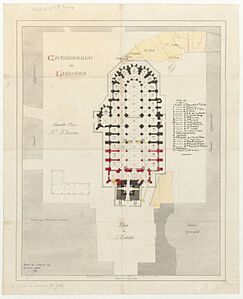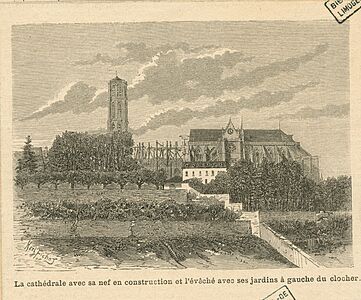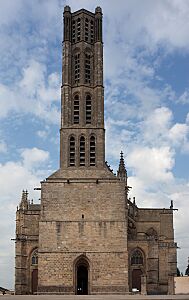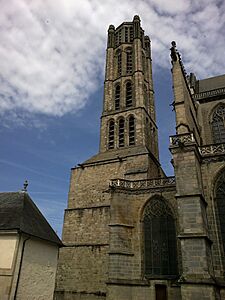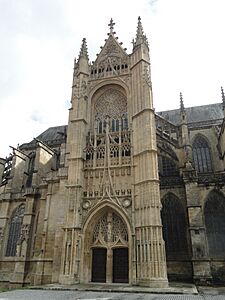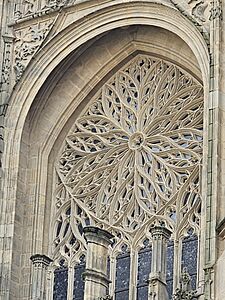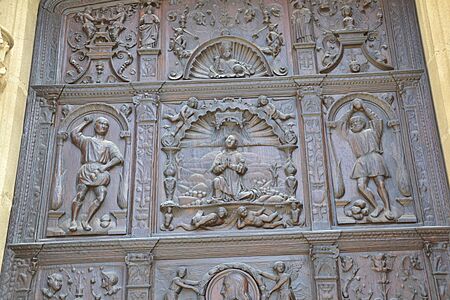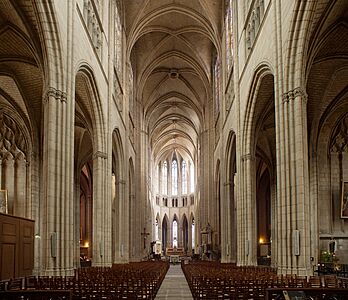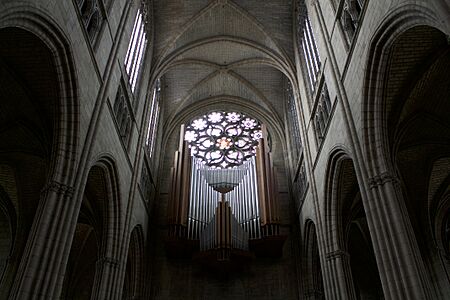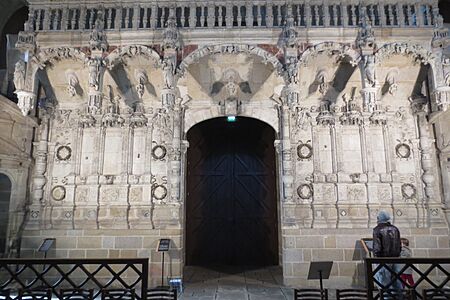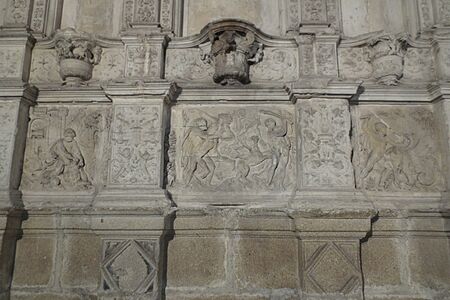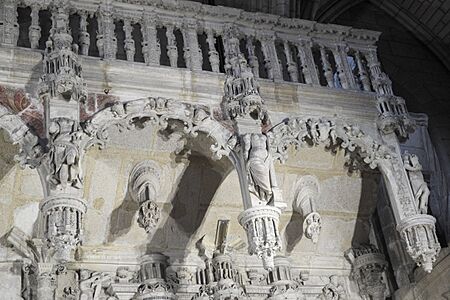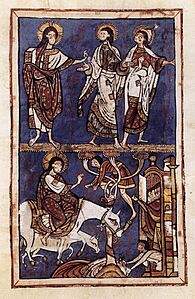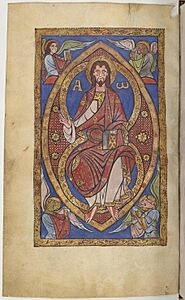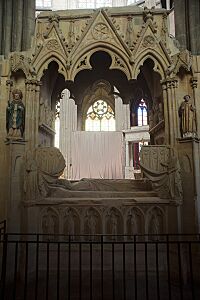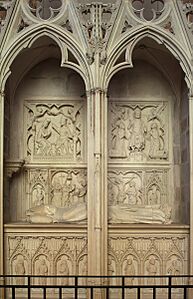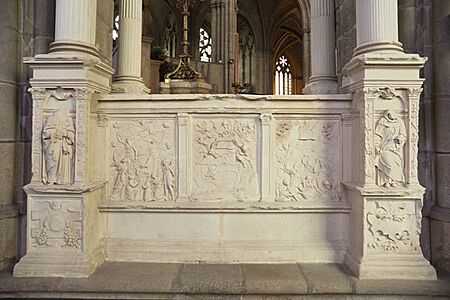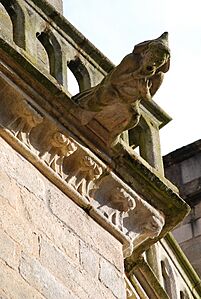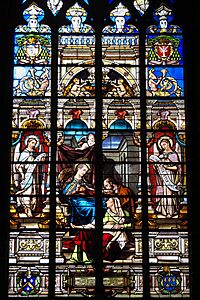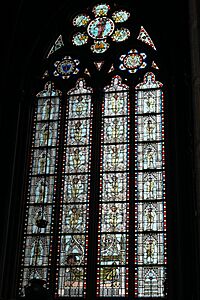Limoges Cathedral facts for kids
Quick facts for kids LimogesFrench: Cathédrale Saint-Étienne de Limoges |
|
|---|---|
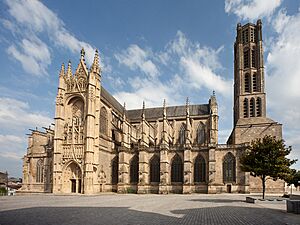
Limoges Cathedral
|
|
| Religion | |
| Affiliation | Roman Catholic Church |
| Rite | Roman |
| Ecclesiastical or organizational status | Cathedral |
| Status | Active |
| Location | |
| Location | Limoges, France |
| Architecture | |
| Architectural type | Church |
| Architectural style | Gothic, Renaissance, Romanesque |
| Groundbreaking | 1273 |
| Completed | 1888 |
Limoges Cathedral (in French: Cathédrale Saint-Étienne de Limoges) is a large Roman Catholic church in the city of Limoges, France. It is a French national monument and the main church for the Bishop of Limoges.
What makes this cathedral special is how long it took to build. Construction started in 1273 but wasn't finished until 1888—that's over 600 years! Because it was built over such a long time, it mixes three different styles of architecture: Romanesque, Gothic, and Renaissance.
Some of its most famous features are its beautiful north entrance, its old bell tower, and a highly decorated screen from the Renaissance period that shows the adventures of the Greek hero Hercules.
Contents
A Cathedral Built Over Centuries
The cathedral we see today wasn't the first church on this spot. The story of this building goes back more than 1,500 years.
The First Churches
The very first cathedral in Limoges was mentioned as early as 475 A.D. Archaeologists have found traces of a small building for baptisms from the 5th century. Later, a larger church was built in the Romanesque style, which was known for its thick walls and rounded arches.
This Romanesque church was consecrated in 1095 by Pope Urban II, who was on his way back from starting the First Crusade. Parts of this old church still exist today. You can see them in the three lower floors of the bell tower and in the crypt, an underground room beneath the main church.
The Gothic Masterpiece
By the 1200s, the city of Limoges had grown, and the old Romanesque cathedral was too small. A new bishop, Aymeric de la Serre, decided to build a much bigger and more beautiful church in the new Gothic style. This style was famous for its tall, pointed arches, high ceilings, and large stained-glass windows.
Work on the new Gothic cathedral began in 1273. The builders started with the back of the church, called the chevet. Construction was difficult because the church was built on a steep slope.
The project was stopped and started many times over the centuries, often because of a lack of money or because of conflicts like the Hundred Years War. Despite the long delays, builders stayed true to the original Gothic design. By the 1400s, the new Gothic parts were connected to the old Romanesque nave (the main hall of the church).
Finally Finished!
For hundreds of years, the cathedral remained unfinished. Finally, in 1876, a major project began to complete the church. The last sections of the nave were built, connecting the main body of the church to the old bell tower.
The cathedral was officially declared finished on August 12, 1888. After more than 600 years, the original medieval plan was complete.
In 2005, a powerful explosion damaged thousands of pieces of stained glass. The careful work of restoring the windows has been going on for many years.
A Look at the Outside
The cathedral's exterior shows its long and complex history, with different styles standing side-by-side.
The Bell Tower
The bell tower is one of the oldest parts of the cathedral. Its lower three floors are from the 11th-century Romanesque church. They are square and have thick, strong walls. The top levels were added later in the Gothic style and have an eight-sided, or octagonal, shape. At 62 meters (203 feet) tall, it stands out as a major landmark.
The tower has had a dramatic past. In 1571, lightning struck its wooden spire, causing a fire that melted all eleven of its bells. Five new bells were made and installed a few years later.
The North Portal
The main entrance to the cathedral is the Portal of Saint John on the north side. Built between 1516 and 1530, it is a masterpiece of the late Gothic style known as Flamboyant, which means "flame-like." It is covered in detailed carvings and decorations that look like flickering flames.
Stepping Inside
The inside of the cathedral is just as impressive as the outside, with soaring ceilings and beautiful artwork.
The main hall, or nave, has very high vaulted ceilings that make the space feel open and bright. The pointed arches are a classic feature of Gothic architecture, designed to draw your eyes upward.
The Rood Screen
One of the most famous treasures inside the cathedral is the Rood Screen. This is a highly decorated stone barrier that was built between 1533 and 1534. It originally stood between the main nave and the choir (the area for the clergy). Today, it has been moved to the back of the church.
The screen is a stunning example of Renaissance art. Instead of religious scenes, it is mostly decorated with stories from Greek mythology, especially the adventures of Hercules. This mix of ancient myths and Christian art was popular during the Renaissance.
The Crypt
Beneath the church is a crypt from the original Romanesque cathedral, built around 1013. It contains the remains of old wall paintings, including one showing Christ. The crypt also held many beautiful medieval books with painted illustrations, known as illuminated manuscripts.
Art and Treasures
The cathedral is filled with centuries of art, from stone carvings to stained glass.
Tombs and Sculpture
Several important bishops are buried in the cathedral. Their tombs are works of art, decorated with detailed sculptures. The tomb of Bishop Jean de Langeac, who died in 1544, is a great example of Renaissance sculpture. It features panels showing scenes from the Apocalypse.
The outside of the church is also decorated with sculptures, including gargoyles. These stone creatures often look like monsters and were designed to act as waterspouts, directing rain away from the building's walls.
Stained Glass
Most of the stained glass windows you see today were made in the 19th century. However, the artists who made them often included pieces of older glass from the 14th and 16th centuries. The windows tell Bible stories and show figures of saints. The bright colors fill the cathedral with light.
The Cathedral's Organs
Limoges Cathedral has two pipe organs. The main organ is a large, modern instrument built in 1963. It sits high up at the west end of the nave. It has three keyboards and a set of pedals for the organist's feet.
There is also a smaller organ in the choir area, which was built in 1850. Both organs are considered historic treasures and are protected by the French government. In the summer, the cathedral hosts organ concerts for everyone to enjoy.
Images for kids
See also
 In Spanish: Catedral de Limoges para niños
In Spanish: Catedral de Limoges para niños


